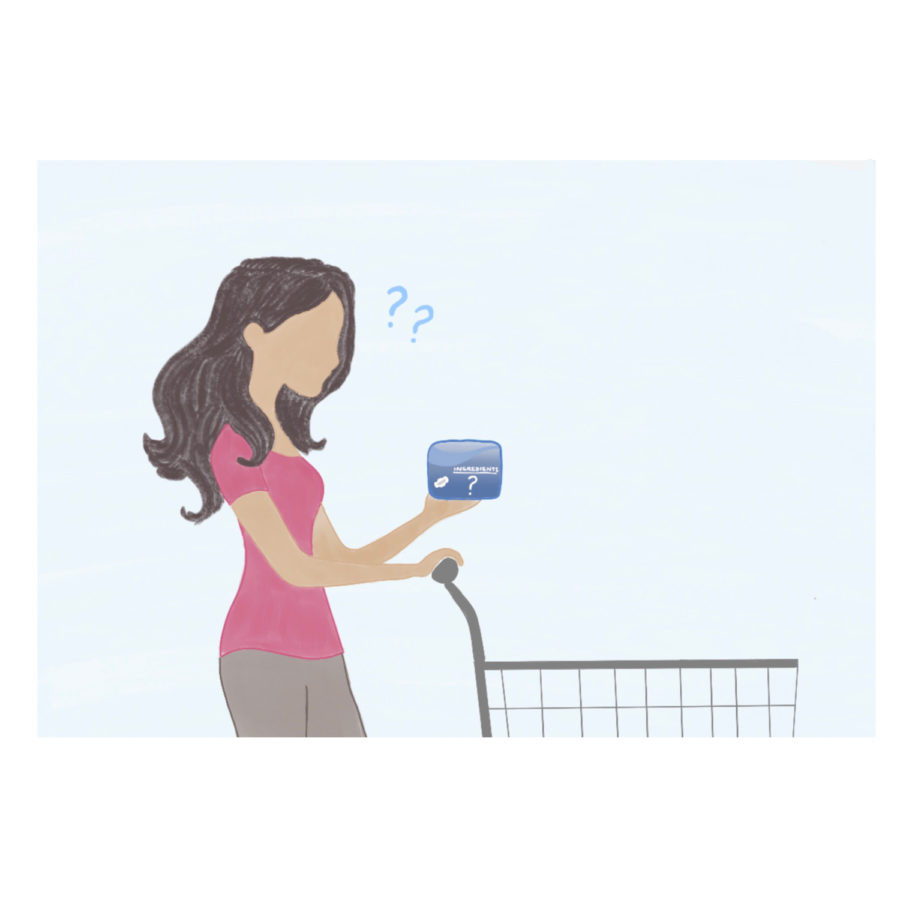Opinion | People deserve to know menstrual product ingredients
March 6, 2019
Feminine hygiene products make up a $3.57 billion market in the United States alone. Despite the existence of reusable methods like menstrual cups and super absorbent period underwear, most women still prefer traditional disposable methods. In one study, 98.67 percent of respondents reported they used either pads or tampons during their last period.
Though tampons are present in many women’s period routines, manufacturers of tampons and other menstrual products are not required to include ingredient lists on their labels. Currently, people who menstruate are unable to make informed choices about what they are putting into their bodies since such information is not being shared. The Food and Drug Administration must reclassify tampons and other feminine hygiene products as medicine or even as cosmetics to force manufacturers to label tampons with their ingredients so women can make informed choices.
Chemicals in menstrual products used to be quite harmful. For example, chemicals in tampons were found to amplify the bacteria that causes toxic shock syndrome in the 1980s and have since been changed to prevent incidents of TSS. While TSS is no longer a significant threat, women still deserve the safety of knowing what chemicals they could be putting into their bodies at what levels.
The FDA currently classifies menstrual tampons and pads as medical devices, along with items like automated external defibrillators, denture adhesives and permanent phakic intraocular lenses. However, tampons, as well as other feminine hygiene products, are very different from these devices.
Unlike tampons, AEDs — external shock devices used to restore the heartbeat of heart attack victims — are not applied inside the body. And intraocular lenses — permanent contact lenses used to correct nearsightedness — are permanently implanted by a doctor who can explain their makeup to a patient, not found on drugstore shelves like feminine products.
Also, neither AEDs nor phakic lenses are used as often or as widely as feminine care products. The average woman in the United States has a three-to-seven-day long period about once a month for about 40 years. Although phakic lenses are permanently installed and spend a longer time in the body than most menstrual products, many more people menstruate than get permanent contact lenses.
Denture adhesives are similar to tampons and pads in the sense that people are able to go to their local drugstore and pick up a box to suit their needs. But unlike tampons and pads, the FDA suggests denture adhesive labels have an ingredients list explaining the active and inactive substances in the product, because overusing denture cream has potentially dangerous side effects.
The FDA’s website lists potential hazards from zinc, a mineral found in denture adhesives, which can cause nerve damage if consumed in excess. Some denture adhesives are zinc-free and say so on the label so the consumers can make educated choices in the products they are putting in their bodies.
Even cosmetic products used on skin and hair are required to have their ingredients listed on packaging, although they are not necessities in the same way menstrual products are.
In addition to ingredient lists, cosmetic manufacturers even include expiration dates on their products, even though the FDA does not mandate they do so. If the FDA does not wish to reclassify period products as drugs, labeling them cosmetics would also require manufacturers to have ingredient labels on their products.
As for current regulations on period products, the FDA currently mandates that the manufacturers of menstrual products for women submit a 501(k) Premarket Notification form, proving that a new product is “is at least as safe and effective, that is, substantially equivalent, to a legally marketed device.” But that is not enough. A manufacturer proving that its new products are just as safe as existing products still does not inform women what ingredients are in products that go in their bodies.
Some have decided to capitalize on the lack of information on ingredients by starting companies that market organic cotton tampons and pads, and BPA-free plastic applicators. Brands like LOLA, L and The Honest Company all market themselves as better alternatives to traditional menstrual products. Despite marketing themselves as better alternatives, each company has different standards to what that means. LOLA’s tampons are 100 percent organic cotton, with BPA-free applicators. L makes tampons, pads and liners, and claims they are free of synthetic pesticides, dyes, fragrances and chlorine.
Brands like L, LOLA and The Honest Company are able to draw business because of the fear women have of not knowing what is in more generic menstrual products. Some are more focused on choice than others. LOLA’s website says the creators got inspired after a conversation they had about not knowing exactly what was in their tampons.
Others have more dangerous rhetoric. L’s website details there are “no ingredients you can’t pronounce” in their products, which can lead people to believe because you cannot pronounce an ingredient it is inherently harmful.
Although these products market themselves as better alternatives for women, they’re unfortunately more expensive. A pack of 10 tampons from L costs $4.95, while a pack of 18 tampons from Tampax costs $3.99 at Target. That’s a difference of 27 cents per tampon. At about 20 tampons per cycle, a woman would pay over $2 more for organic products, or over $1,000 over the course of her life.
Women will use tampons and other period products for an average of 40 years over the course of a lifetime. People deserve to know what they are putting in their bodies, and the FDA needs to do a better job of regulating the way feminine products are labeled. By reclassifying tampons and other menstrual products as a drug or even as a cosmetic product, women would be able to make more informed choices about what goes into their bodies.









